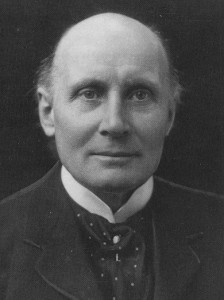Chapter 6. Part F
The evidence proving that a given, deeply
imprinted, old value and the behaviors that it fosters have become
counter-productive and outmoded is often not even recognized by the ones who
hold and live by that value. Rather, the evidence is recognized by the nation,
or even by the whole human race, when those people, their values, and their way
of life don't survive as well as their competitors do. Then, they slowly
adjust, by modifying some of their ways, if that is possible in the available
time, or they, their values, and their ways die out altogether. The El Molo are
almost gone. The Canninites, Bo, Anastazi, and Beothuk are gone. Troy and
Carthage are gone. None of this is fair. It’s just over.
Demasduit (one of the last Beothuk)
In the more gradual adjustments that some
societies have managed to achieve, it sometimes also happens that sub-cultures
within a society die out without the whole tribe dying out, and thus some
values and beliefs in the culture die out while the larger culture itself,
after sustaining major trauma and healing, adjusts and goes on.
For example, Hitler and his Nazi cronies
ranted until their last hour that their "race" should fight on till
they all went down in a sea of blood because they had shown in the most vital
of arenas, namely war, that they were weaker than the Russians. He sincerely
believed his Nazi philosophy. In the same era, the Japanese cabinet and High
Command contained members who were adamant in arguing that the Japanese people
should fight on, even in the face of hopeless odds. To do anything other than
to fight on was literally inconceivable to these men. (Yukio Mishima's case was
a curious last gasp of Japanese imperialism.) (5.) Fortunately, people who
could face reality, learn, adapt, and then thrive eventually prevailed, in both
Germany and Japan.
Yukio
Mishima
For centuries, human "nature" has
not enabled humans to assess value systems by our cognitive abilities, and then
adopt or drop these systems in that vacillating cognitive way. In our
tribalism, we are built to see the moral values and the mores that we grew up with as being
“right” and “good”. Humans are thus designed by evolution to fight to the death
to defend and promulgate what we in the West call our “way of life”. When the
ways of life of two different cultures come into confrontation, for whatever
set of reasons, the war that often follows then decides which is the more
vigorous way of life. The stronger society/culture goes on and expands; the
weaker one fades and is absorbed. Or dies out. By this mechanism of cultural
evolution, the total human culture-meme pool, for eons, has grown strong. For
eons, this was good for the culture-meme pool, but bad for those caught up in
the confrontations.
A culture is just the software of a nation. A
culture evolves and survives or else falls behind and dies in ways that are
analogous to the ways in which a genome survives or dies. If a culture-program
gets good practical results over generations, its carriers multiply; if not,
they don't, and then they and it fade out of our species’ total culture pool.
What was sad but true for centuries was that a society's fitness to survive was
sometimes tested by famine or epidemic disease or natural disaster, but more
often it was tested by war with one of its neighbors. For centuries, when a
tribe, guided by its culture, was no longer vigorous enough to hold its
territory against invasions by neighboring tribes, it fought and lost. Its men
were killed, its women and children were carried off by the enemy; its way of
life dwindled and was absorbed, or in some cases, vanished entirely. Thus
Joshua smote Hazor, the ancient Greeks crushed Troy, the Romans, Carthage. Out
of existence. The examples could go on.

ruins
of Carthage in modern Tunisia
So was Hitler right? Is war
inevitable, even desirable? It depends. The question that we are left with is
whether we will ever rise above our present, mainly war-driven system of
cultural evolution. By reason or suffering or both, we are going to have to
arrive at a new process for evolving culturally, which means continually adopting,
in a timely way, constantly updated, more efficient values and the behavior
patterns that are fostered by, and, therefore attached to, these values.
Changes in our circumstances always come.
Some of them we even cause. We can cushion our way of life against them for a
while, but over time, reality demands that we either evolve or die out.
But for now, I will leave the war digression
and the socio-cultural mechanism of human evolution to be more thoroughly
discussed in later chapters.
For now then, let’s settle for saying that
this point that Bayesianism’s critics make about the way in which some areas of
human behavior do not seem to be based on Bayesian types of calculations only
seems at first to be an apt criticism. If we study the matter more deeply, we
see that there are reasons for our apparently un-Bayesian attachments to some
of our most counter-productive values and morés. They are just crude,
upsetting, warmongering reasons -- design flaws that we are going to have to
deal with because they have long since fallen out of touch with the physical
reality that surrounds us (a physical reality that, in large part, we have
created) and with the dilemma in which we find ourselves. "Mankind must
put an end to war or war will put an end to mankind." (John Kennedy) (6.)
John
F. Kennedy, 35th president of the U.S.
Most importantly, for the purposes of this
book, we can see that the Bayesian model of human thinking still holds. Deeply
held beliefs, values, and morés do get changed – sometimes even in whole
nations – by the Bayesian mechanism. We do get rid of old beliefs and adopt new
ones when the old ones are no longer enabling us to handle the physical and
social realities that we are seeing before us. If the father and mother can’t
drop ineffectual old beliefs and adopt new ones, then the son and daughter
must, or else the tribe dies out altogether. In other words, we humans do
learn, change, and adapt, both as individuals and as whole nations.
Individuals can learn and change on most ordinary,
practical matters. However, by and large, they won’t willingly alter their
deepest, most general, core beliefs - the ones called “moral values”. These get
changed only when a whole nation gets taught a very large, painful lesson and
then re-configures. And once in a long while, a really stubborn culture dies
out altogether.
We will have more to say on these matters in
later chapters. The first big criticism of Bayesianism has been dealt with. The
Bayesian model, when it is applied at the tribal level of human behavior, can
fully account for the apparently un-Bayesian behaviors of individuals. We now
must move on to the second big criticism of Bayesianism, the theoretical one.
And perhaps this is the point at which I
should also say that the next chapter is fairly technical, and it isn’t
essential to my case. If you want to skip a chapter, my next chapter is one
that you can skip and still not lose the train of thought leading to the
conclusion of the whole argument.
Notes
1.http://www.academia.edu/4029955/Degenaar2013_Through_the_Inverting_Glass
2. Kuhn, Thomas; "The Structure of Scientific
Revolutions"; University of Chicago; 1996
3.
http://www.constitution.org/jsm/women.htm
4.
http://en.wikiquote.org/wiki/Alfred_North_Whitehead
5. http://en.wikipedia.org/wiki/Yukio_Mishima
6.
www.jfklibrary.org/Asset-Viewer/DOPIN64xJUGRKgdHJ9NfgQ.aspx








